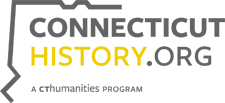Jump to:
Working with Indigenous Communities
CT Humanities Indigenous Values Statement
CTH is committed to supporting, partnering, and collaborating with the five State and Federally recognized tribes (hereafter referred to as “the five Tribes”) on initiatives important to their communities. We will include Indigenous voices and perspectives in board governance, through partnerships, grantmaking, projects, and more.
Tribal Self-Determination and Sovereignty
We respect the self-determination and sovereignty of the Eastern Pequot Tribal Nation, the Golden Hill Paugussett Tribal Nation, the Mashantucket Pequot Tribal Nation, the Mohegan Tribe, and the Schaghticoke, all of which have a continuity of legal and political relationship with the State (and preceding colony) of Connecticut extending back into the 17th century.
Indigenous Resilience
Connecticut is the original homelands of many Indigenous people, including the five Tribes. When telling the many stories of Connecticut, it is important to work with the five Tribes. CT Humanities understands that genocide, dispossession, dislocation, enslavement/servitude, colonization, and termination are part of the complicated and nuanced history of the State of Connecticut. CT Humanities also understands that the five Tribes are active, vibrant, and resilient communities.
Indigenous perspectives
Indigenous peoples and their traditional knowledges, systems of governance and politics, cultural expressions, voices, and perspectives are an integral component of Connecticut’s past, present, and future. CT Humanities is committed to sharing, reckoning with, and acknowledging these stories of resurgence and reclamation.
Relationship building
Relationship building is at the heart of our work and CT Humanities is committed to engaging with Indigenous partners and communities. We encourage and support making connections with the citizens, businesses, and cultural organizations of the five Tribes.
Resources
It is essential to center Indigenous perspectives in telling Indigenous stories. The following resources may be helpful to you if you are considering developing a project about Indigenous communities:
FAQs
FAQ responses were developed by CTH board and staff in collaboration and consultation with Indigenous partners.
Updated May 22, 2025.




